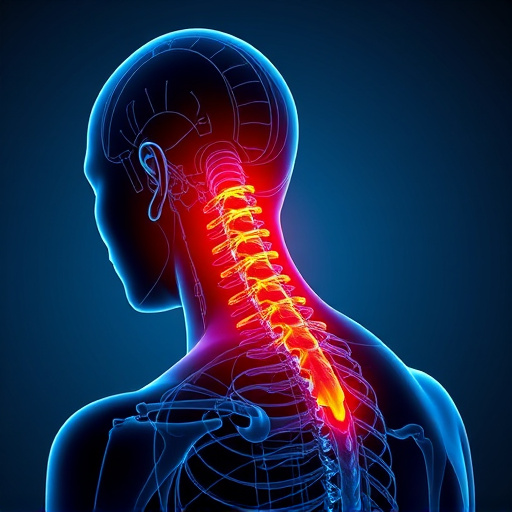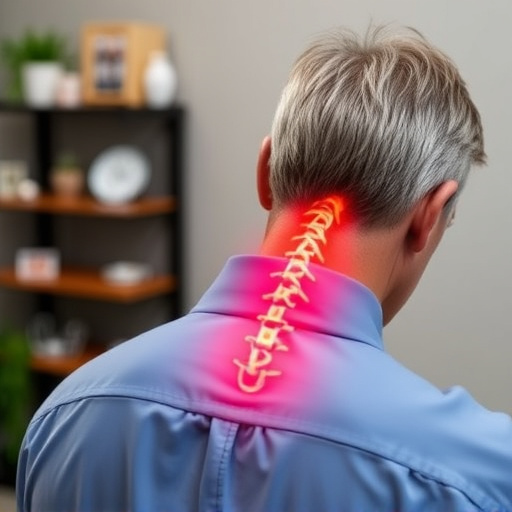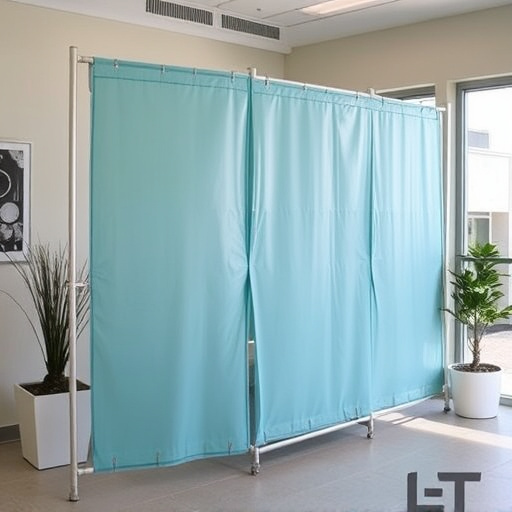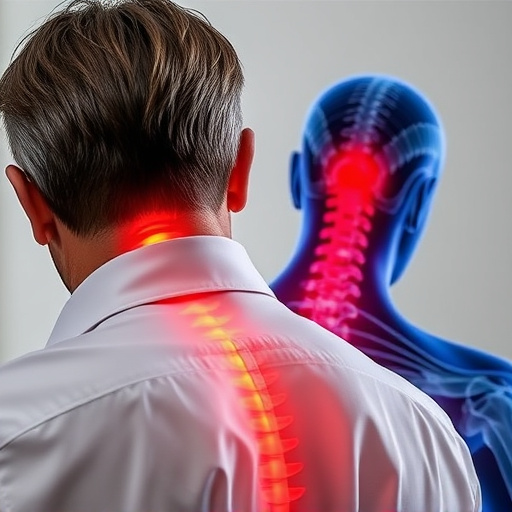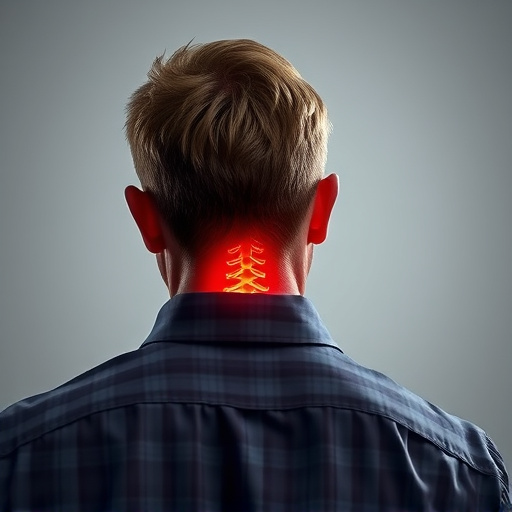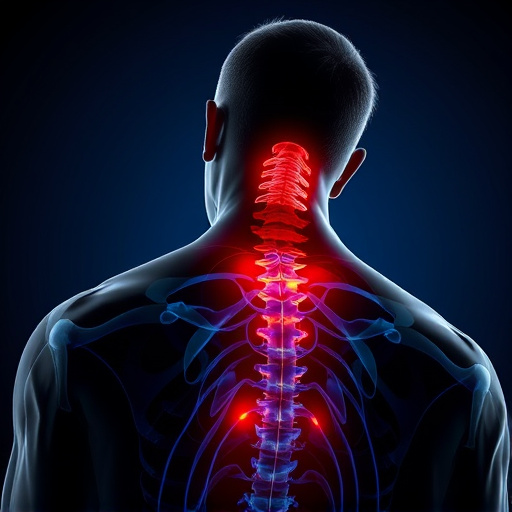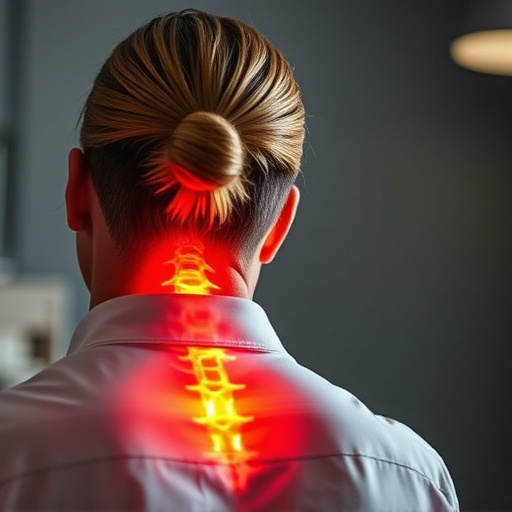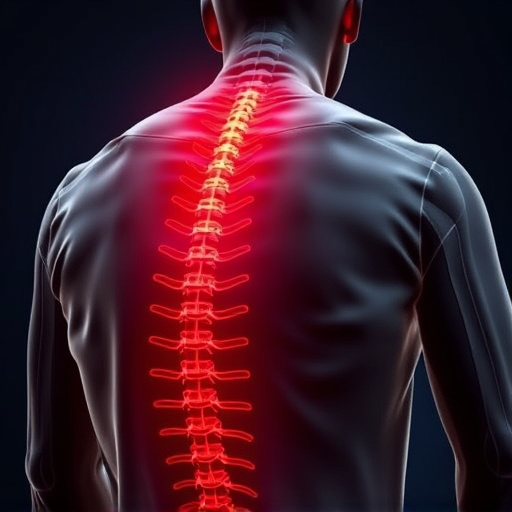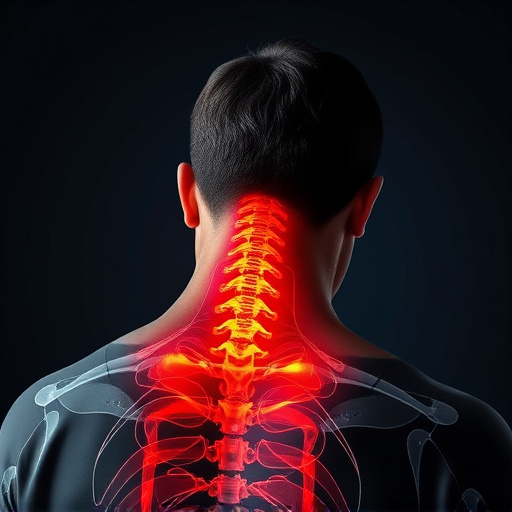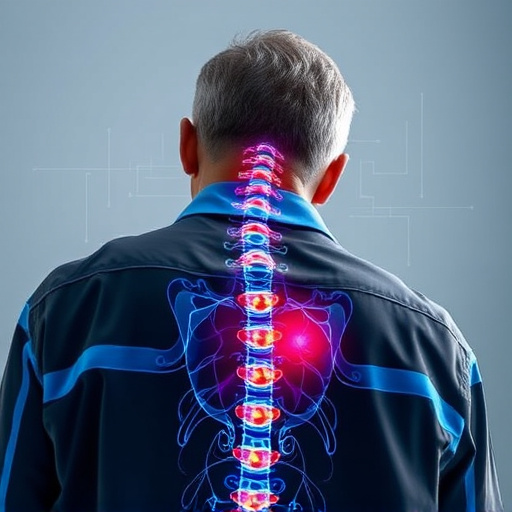Workplace-related neck and back pain is a widespread issue, requiring a comprehensive approach for effective management. This includes ergonomic assessments, workplace adjustments, employee training, stretching breaks, and open communication. Access to healthcare professionals offers personalized treatments like physical therapy, medication, or alternative therapies for lasting relief. Employers can prevent injuries through risk assessments, ergonomic workstations, and proper lifting techniques. Immediate care for mild cases includes rest, ice/heat therapy, and painkillers; more severe injuries need prompt medical attention. Physical therapy and ergonomic adjustments ensure long-term recovery, while mental health support aids in stress management. Ergonomics, optimized through stretching breaks and adjustable furniture, significantly reduces musculoskeletal disorders, enhancing productivity and job satisfaction. This section offers practical techniques for neck and back pain relief, emphasizing tailored solutions for acute and chronic pain.
Workplace injuries, particularly persistent neck and back pain, are a significant concern. This comprehensive guide delves into the multifaceted issue of workplace-related injuries, offering strategies for immediate relief and long-term recovery. We explore common causes, from poor ergonomics to repetitive tasks, and present effective treatment approaches, emphasizing the vital role of ergonomics in prevention. Additionally, we discuss employee education and support systems crucial for sustained wellness, ensuring a healthier and safer work environment.
- Understanding Workplace-Related Injuries: Neck and Back Pain
- Identifying Common Causes of On-the-Job Discomfort
- Strategies for Immediate Relief and Short-Term Management
- Comprehensive Treatment Approaches for Long-Term Recovery
- Role of Ergonomics in Preventing and Managing Workplace Injuries
- Employee Education and Support Systems for Sustained Wellness
Understanding Workplace-Related Injuries: Neck and Back Pain
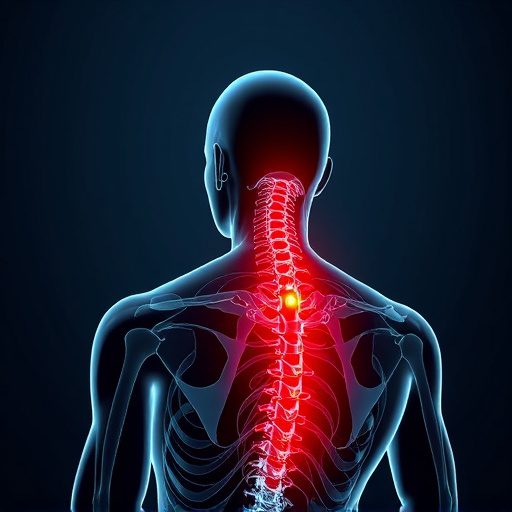
Workplace-related injuries often manifest as persistent neck and back pain, which can significantly impact an employee’s quality of life and productivity. These types of injuries are common in various occupations, from office workers sitting at desks for extended periods to construction workers engaging in physically demanding tasks. Such pain may arise from poor posture, repetitive motions, or sudden injuries during work activities.
Effective management of neck and back pain relief involves a multifaceted approach. This includes ergonomic assessments and adjustments to the workplace setup to prevent further strain. Employers can promote healthy habits through training sessions on proper lifting techniques, regular stretching breaks, and encouraging employees to maintain open communication about their discomfort. Additionally, providing access to healthcare professionals specializing in occupational health can offer personalized treatments, including physical therapy, medication, or alternative therapies, to help employees achieve lasting neck and back pain relief.
Identifying Common Causes of On-the-Job Discomfort
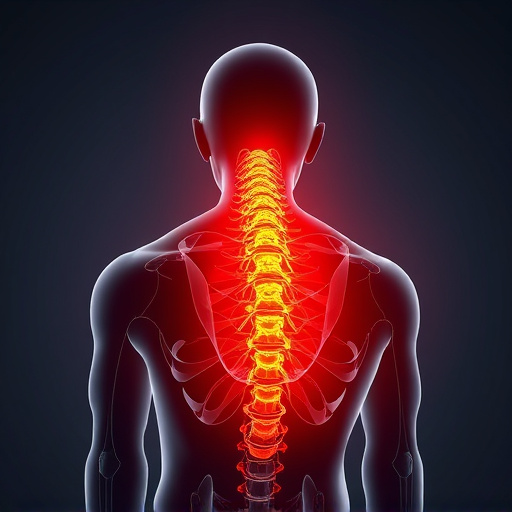
Workplace injuries can stem from a variety of causes, with many employees experiencing persistent neck and back pain relief issues. Common culprits include repetitive motion tasks, poor ergonomics, heavy lifting, and slip or fall accidents. These factors contribute to musculoskeletal disorders, such as carpal tunnel syndrome, tendinitis, and lower back strain.
Identifying these hazards is the first step towards implementing preventative measures. Employers can play a pivotal role in fostering a safer environment by conducting regular risk assessments, providing adequate training on proper lifting techniques and equipment use, and ensuring workstations are ergonomically designed to minimize physical stress.
Strategies for Immediate Relief and Short-Term Management
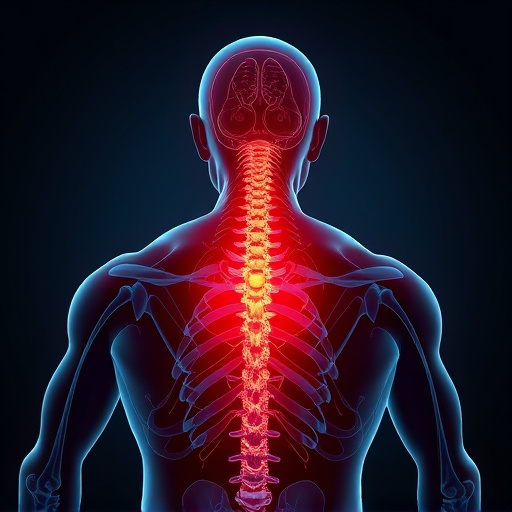
Immediate relief for workplace injuries, especially those involving neck and back pain, is crucial to facilitate a swift return to productivity. The first step in short-term management involves assessing the severity of the injury. Mild cases may only require rest, application of ice or heat, and over-the-counter pain relievers. However, for more severe injuries, seeking medical attention promptly is essential.
Physical therapy can offer targeted exercises for strengthening muscles and improving posture, which aids in neck and back pain relief. Short-term interventions should also focus on ergonomic adjustments to the work environment to prevent further strain. This includes using adjustable desks, ergonomic chairs, and ensuring proper lifting techniques are practiced by employees to manage and mitigate ongoing discomfort.
Comprehensive Treatment Approaches for Long-Term Recovery
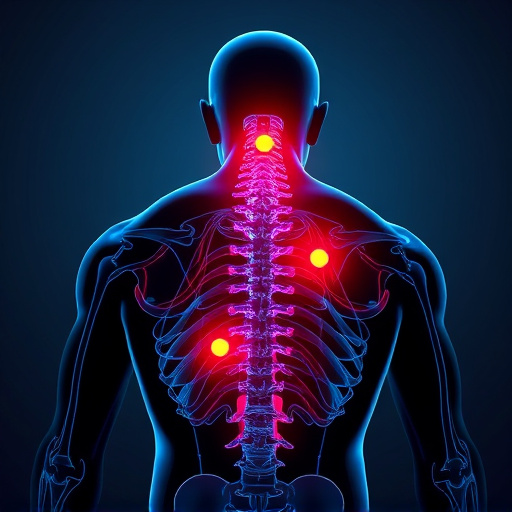
Workplace injuries, especially those involving neck and back pain, require comprehensive treatment approaches for long-term recovery. Beyond immediate medical care, a holistic strategy focusing on physical therapy, ergonomic adjustments, and mental health support is essential. Physical therapists play a pivotal role in providing specialized exercises to alleviate pain, improve mobility, and prevent future exacerbations. Ergonomic interventions, such as adjusted workstations and equipment, help reduce the risk of recurring injuries by promoting proper posture and body mechanics.
Mental health aspects are equally important, as workplace-related injuries can take a toll on an individual’s psychological well-being. Offering counseling services or employee assistance programs can assist workers in coping with the stress and anxiety associated with their injuries, fostering a smoother transition back to work. Integrating these diverse components ensures that employees receive the comprehensive care necessary for complete neck and back pain relief and a successful return to their professional roles.
Role of Ergonomics in Preventing and Managing Workplace Injuries
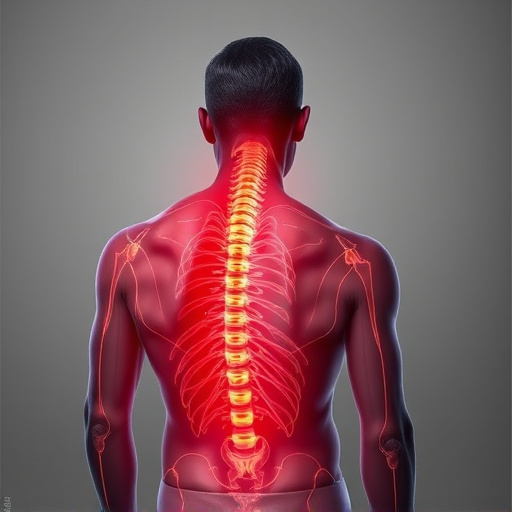
Ergonomics plays a pivotal role in both preventing and managing workplace-related injuries, especially those leading to neck and back pain. By focusing on the fit between individuals and their work environment, ergonomics aims to reduce physical stress and strain. This includes adjusting workstation setup to support proper posture, ensuring tools and equipment are easily accessible, and promoting regular breaks to minimize prolonged static postures.
A proactive approach to ergonomics can significantly decrease instances of musculoskeletal disorders and related pain conditions. Employers should encourage employees to adopt ergonomic best practices, such as using adjustable furniture, taking regular stretching breaks, and maintaining a balanced body position while sitting or standing. By integrating these measures into the daily routine, workers can find lasting neck and back pain relief while enhancing their overall productivity and job satisfaction.
Employee Education and Support Systems for Sustained Wellness
